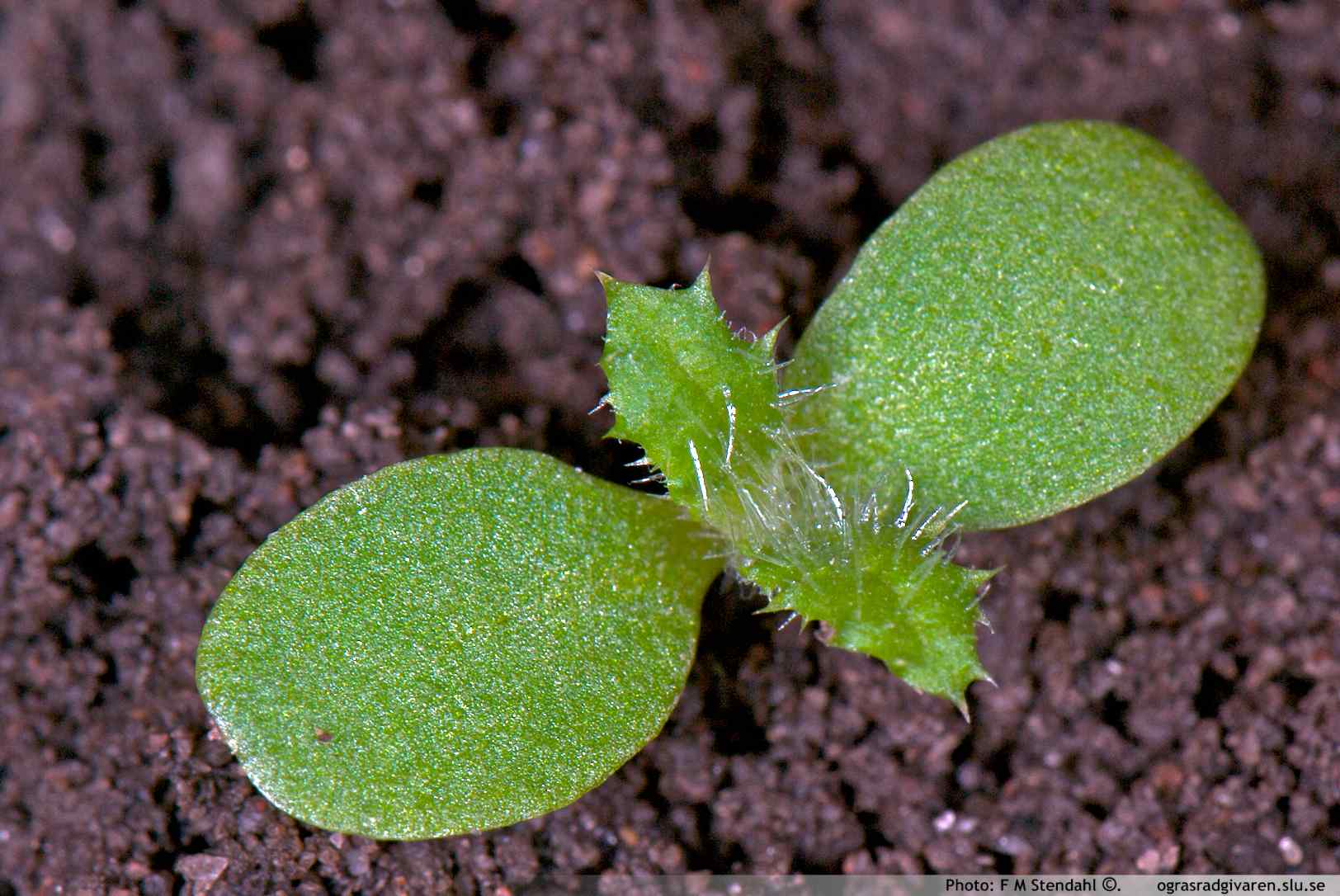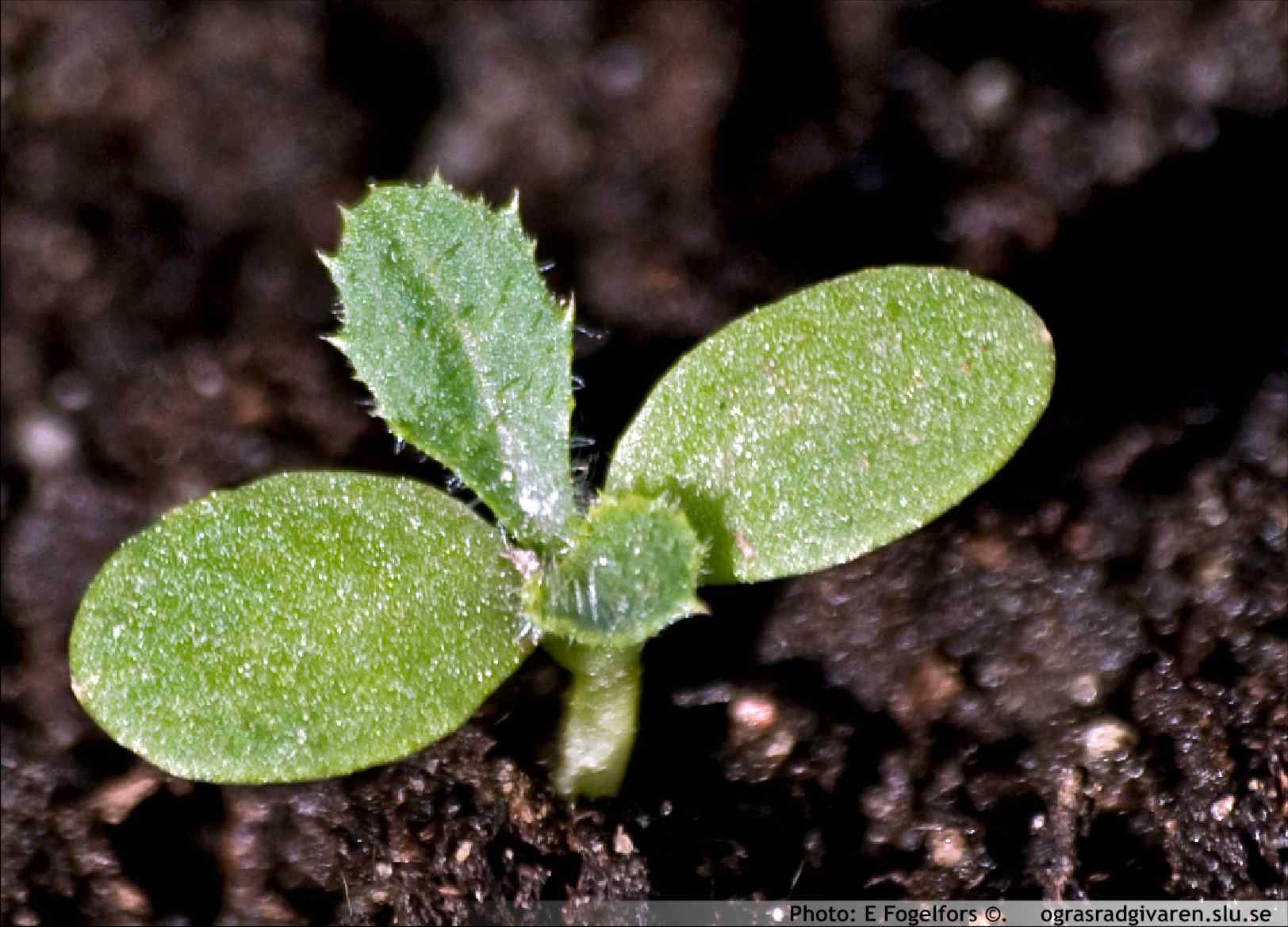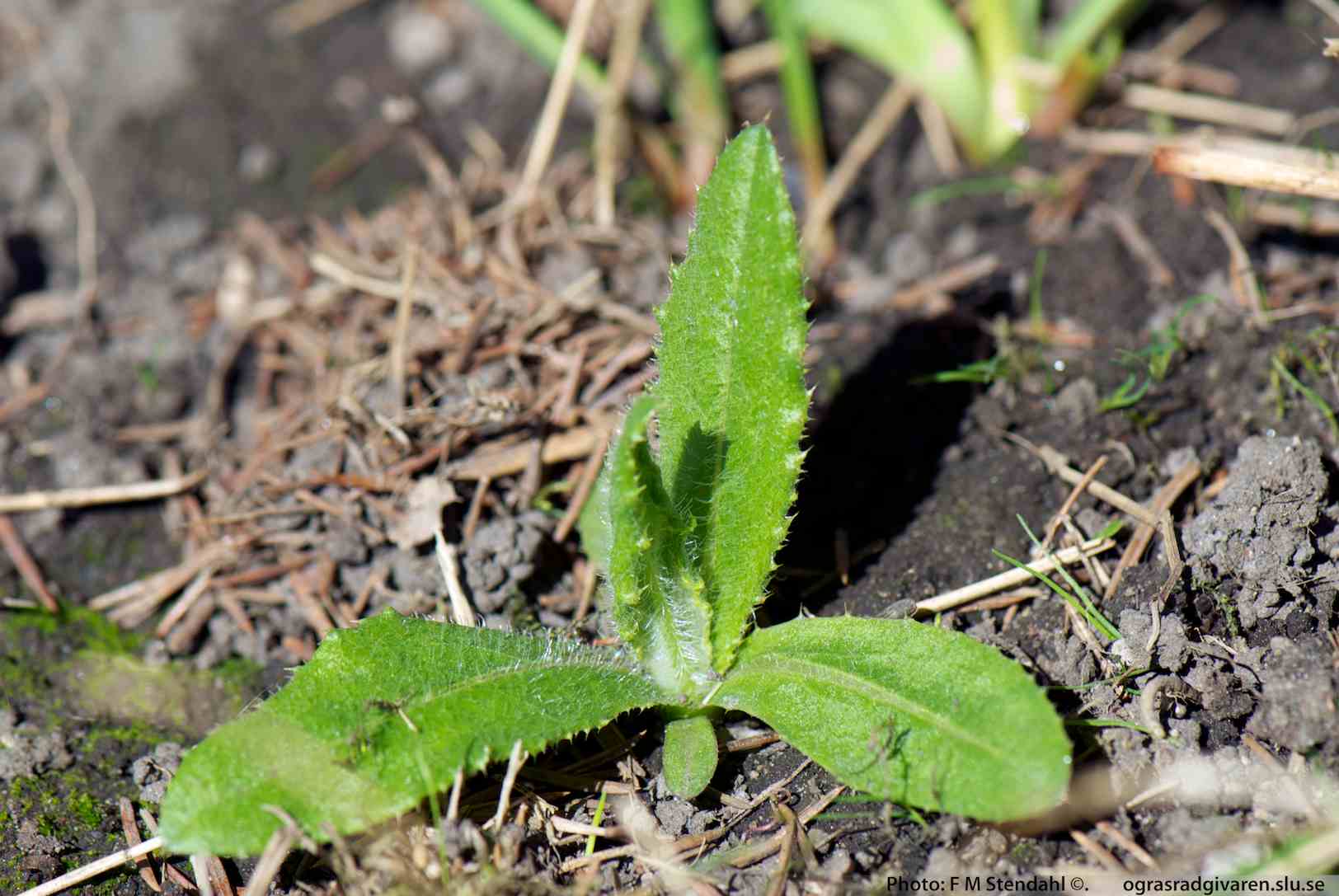Creeping Thistle
(Cirsium arvense (L.) Scop.) Fam:. Asteraceae
![]() Ager-Tidsel,
Ager-Tidsel,
![]() Põldohakas,
Põldohakas,
![]() Pelto-ohdake,
Pelto-ohdake,
![]() Akkerdistel,
Akkerdistel,
![]() Þistill ,
Þistill ,
![]() Tiruma usne,
Tiruma usne,
![]() Dirvine usnis,
Dirvine usnis,
![]() Åkertistel,
Åkertistel,
![]() Ostrożeń polny,
Ostrożeń polny,
![]() Бодяк полевой,
Бодяк полевой,
![]() Acker-Kratzdistel ,
Acker-Kratzdistel ,
![]() Åkertistel
Åkertistel
General preventative measures:
- A large proportion of winter-sown crops (preferably winter rye) and a ley proportion of at least one-third in the crop rotation (preferably two-year leys).
- Competitive crops and varieties. Thus avoid maize, linseed, lupin and peas in pure culture.
- Plough in spring if possible in terms of soil conditions and sow as soon as possible after spring ploughing.
Control measures:
- Break up thistle roots by e.g. stubble cultivation directly after harvest, followed by deep autumn ploughing at least 3-4 weeks later. If spring ploughing is possible, it can give a better weed control effect.
- With a full fallow, plough thistle under when the flower buds are visible on the most advanced plants, i.e. when thistle has developed 8-10 full leaves. The plant’s energy reserves are at their lowest then, since more energy is used during this first phase of development than is supplied through photosynthesis. The energy balance or net assimilation in the plant then becomes positive as the compensation point (see below) is passed, and repeated cutting or tillage at this stage means that the plant is gradually starved out.
- Repeated cutting of green manure crops and forage leys by either cutting winter crops or topping the field every time the thistles have developed 8-10 full leaves (NB: more leaves in a dense crop than on bare soil in e.g. fallow). Optimal effect is achieved by 2-3 cuts during a growing season. Two cuts are usually enough for sparse thistles. With 4 or more cuts the ley crop is pressurised too much and its competitive effects can be lowered, allowing thistles to expand.
- Cut thistle stalks with e.g. a strimmer as soon as they start to develop flower buds, whether in the field itself or in edges, corners and other neighbouring areas. Don’t delay control measures, start to cut before large stalks have formed. Random cutting can promote shoot development.
- Chemical control (click below).
Garden
|
Control/species (click):
Handrensning eller uppgrävning


